 This post was written by Cat Gaa. Cat is a Chicago native who is currently living in Seville, Spain, where she teaches English. When Cat isn’t teaching or enjoying her Sevillian lifestyle, she is planning her next trip around Europe. Check out my interview with Cat about her experiences teaching English in Spain. And check out her blog here.
This post was written by Cat Gaa. Cat is a Chicago native who is currently living in Seville, Spain, where she teaches English. When Cat isn’t teaching or enjoying her Sevillian lifestyle, she is planning her next trip around Europe. Check out my interview with Cat about her experiences teaching English in Spain. And check out her blog here.
Jaime, in his usual fashion, slammed his English composition book onto the table and took in a long, deep, Spanish-widow-in-mourning sigh. “I have to write an essay about what I like best about Seville.”
Since his first essay had been a timeline of the life of Jesus Christ, I was relieved. After all, I could think of plenty of things I loved about my adopted city – drinking beers on outdoor terrazas, staying out late and chowing down on greasy churros as the day breaks, and sunny days accompanied by tinto de verano. But these topics wouldn’t be appropriate for a 13 year old’s school essay, so I had to come up with something fast.
“I know,” I said brightly, “You could write about the Feria!”
Jaime loves horses and anything expensive, so I knew Seville’s famous April Fair would be an easy topic for Jaime to get a good grade and me my 14 euros.
His thesis was something along the lines of: After a years worth of preparation, feriantes can enjoy a week-long celebration of all things Andalusian: sherry, horses, and flamenco.
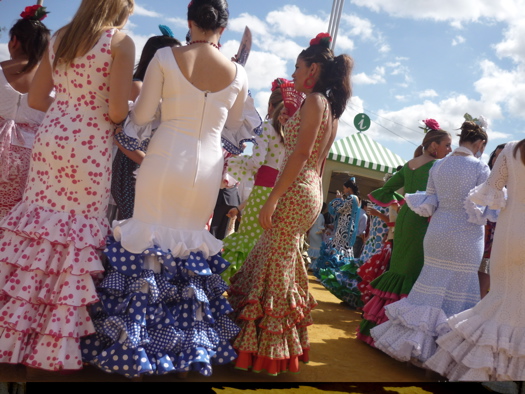
I could just about smell the fried fish and sherry wafting from his paper.
I’m what you might call feriante – someone who tries on her flamenco dress once a month to make sure it’s still tight around all the right curves and buys accessories for it in October and dances sevillanas in her sleep. I look forward to the April Fair the way I looked forward to Halloween as a kid, but my sugar-high has since been replaced with buttery jamón serrano and potato omelettes.
After all the somber Holy Week processions have finished and the gold-laden floats have been safely returned to their churches, Sevillanos work overtime for two weeks to ensure the Real de la Feria, a 6-block stretch of barren land at the southern end of the city, is ready for the seven nights of the fair. Temporary tents, called casetas, are erected, lanterns strung and carnival rides towed in.
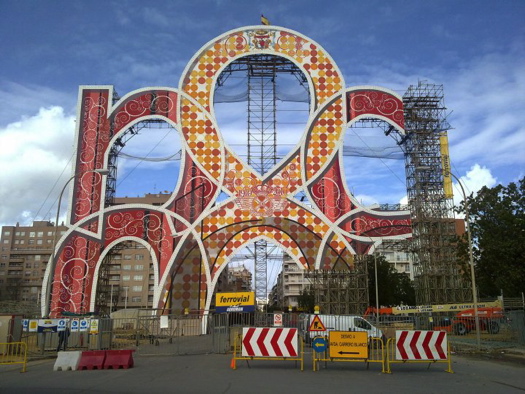
In its five-century history, the Feria de Sevilla has grown from a small animal market in a park to one of Spain’s most emblematic festivals where sherry flows through the streets, horses become more prevalent than cars and women spend a month’s salary on a traje de flamenco, a traditional gypsy dress usually associated with the Andalusian dance of the same name. What was once a public event has now become a game of “Where do I have encufe?” or, what friends of mine belong to casetas, whose membership costs thousands of euros annually, giving an air of aristocracy that distinguishes Seville from its poorer neighbors.
For fifty-one long weeks during the year, the Real sits empty, save for the cement foundations used during the fair for the marquees. In late Feburary, the city begins to construct a large central gate, known as the portada, and hired workers set up the marquees shortly after. The streets, named for bullfighters, come alive in red, greens and whites, and farolillas, a paper lantern usually bearing the name of a sherry distributor, are strung. Feria officially comes alive at midnight on the Monday two weeks after Easter Sunday during the alumbrado, the annual lighting of the main gate and subsequent illumination of the tens of thousands of lanterns. All at once, flamenco music starts spilling out of the casetas and the smell of fried fish is inescapable.
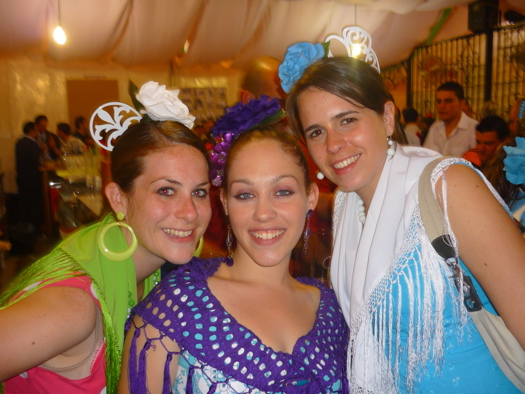
Seville’s spring festivals are so famous, the city has its own government entity devoted to them. But unlike Holy Week, the fair is restricted to the Real, and penitence has no place among the flamenco dress skirts and horse carriages. Feria differs from day to night – during the day, carriages clog the streets, hitched up to beautiful grey Jerezano horses. A cleaning truck follows close behind, insuring flamenco dresses aren’t traipsed through kakita, and those on horseback in riding suits sit atop smug looking horses sipping manzanilla out of teeny wine glasses.
Feria is not right for you if you’re on a budget – a ration of jamón serrano can run you 13€, a jar of rebujito, a refreshing mix of a half litre of manzanilla sherry and two cans of 7-Up, ten. Then, add your membership to a caseta, the price of parking your horse right out front, your new outfit and possibly one of six bullfights in the sombra section of the Maestranza and, well, you’re likely to eat packaged tortilla and dry pasta until payday. Smart people eat at home.
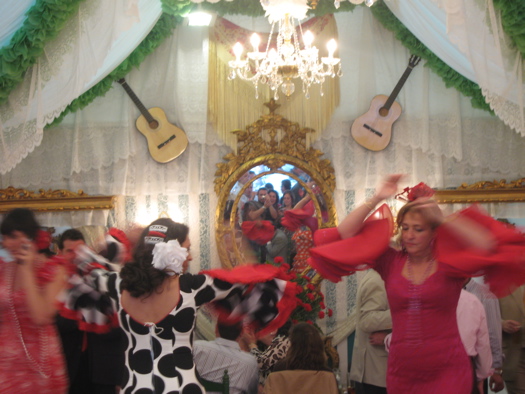
Those in Seville are given the entire week off of work, but for those of us who work outside the city limits, Feria becomes a marathon of eating, drinking and lack of sleep (and just how far you can stretch your wallet!). The farolillo lanterns stay on until 4 a.m.
Tuesday is, by far, the Sevillano’s favorite day: everyone is fresh, there’s less crowds and you’ve still got enough money to not live off of finger-sized sandwiches. Brightly colored trajes are debuted, casetas rock with live bands and famous names pop up in the doors of the most popular tents. The lights stay on a lot later on Tuesdays, and my feet start to give out at the same time that the sweet rebujito is hitting me.
I tend to go easy on Wednesday, just eating with coworkers in one of their marquees. We put in 10 euros por barba and gorge on creamy salmorejo, garlicky pork loins, ham and cheese and sherry. The front of the house is set up for dancing and eating at short, painted tables, while the back contains the bar and kitchen. The tents become temporary houses where groups of friends, political organizations and businesses eat, drink and dance. Sevillanas commence whenever there’s a space on the dance floor, and we laugh the next day as our students complain that their parents will only take them on the weekends.
Thursday, Friday and Saturday seem to always blur together. No work, crowds and a trance-like state from exhaustion make the last three days either drag or go by faster then you can order another drink. My arms ache from dancing, my feet from hoofing it home at 5 a.m. after a plate of doughy churros con chocolate. My dress is full of the dull-yellow dirt that covers the fairgrounds, I’ve stepped in horse poop more time than I’d like to remember and I’m ready to throw in the towel. But I love the way my dress hits me in all the right places, looked forward to shrieking while riding the cacharritos with my students and how I forget I’m foreign when I’m dancing.
I end the week on empty and find myself craving just one more day. I stoutly refuse to watch Sunday’s fireworks, signifying the end of the most Andalusian festival that exists and my return to la vida cotidiana – the everyday routine.
Jaime’s excitement for Feria, or maybe just enthusiasm for finishing his easy, was palpable. “This year, I’m bringing my horse. My mom says so,” he quipped. “And she’s having a painting done of my sister in her traje de flamenco.” Within a few weeks, I had another one myself and was charting the erection of the portada and the 1,000 tents. Progress has been slowed due to months of perpetual downpours, but we Sevillanos are resilient and aren’t going to let anything rain on our horse carriage parades and our proudest festival.
As for Jaime, he got an A+ on his essay, and in turn, I got an invitation to his family’s caseta. Good trade off for this feriante.

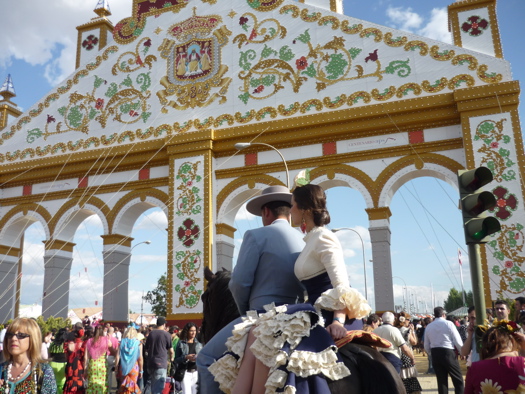
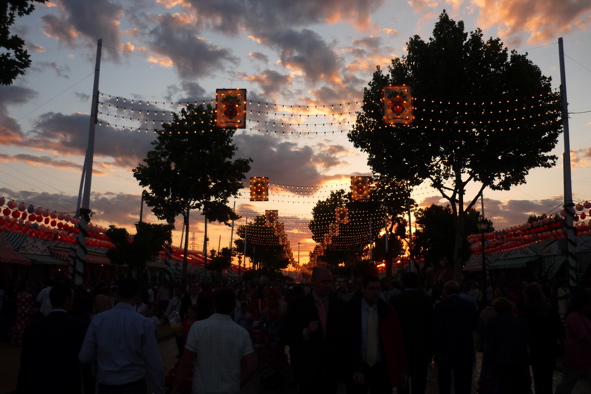
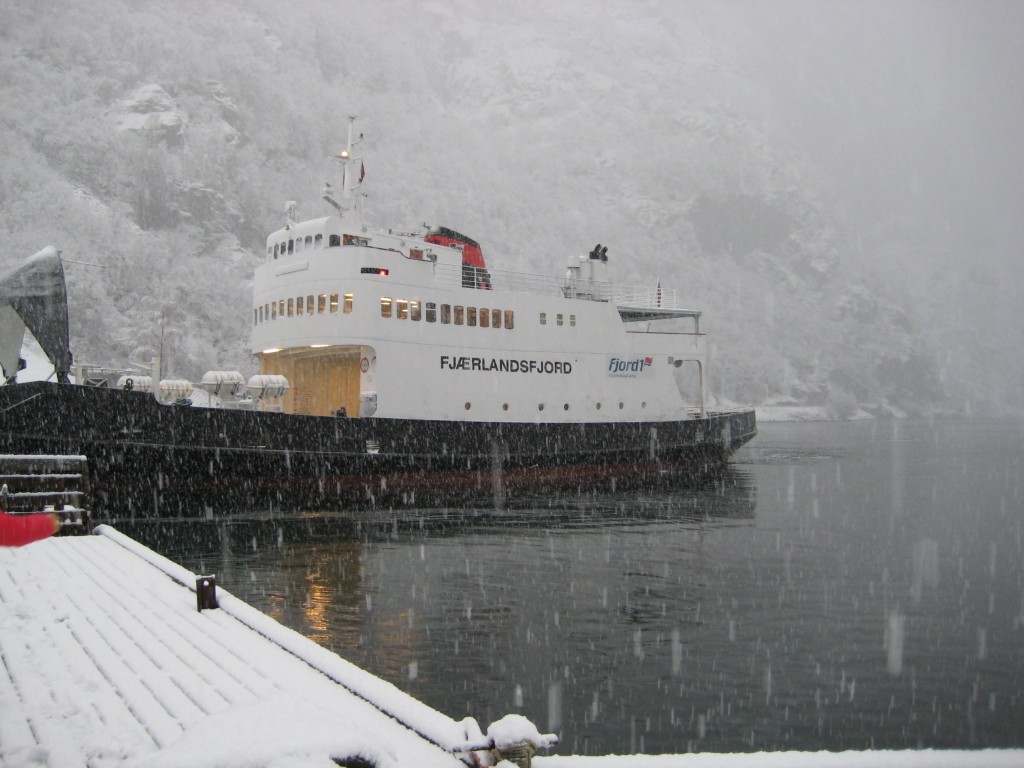
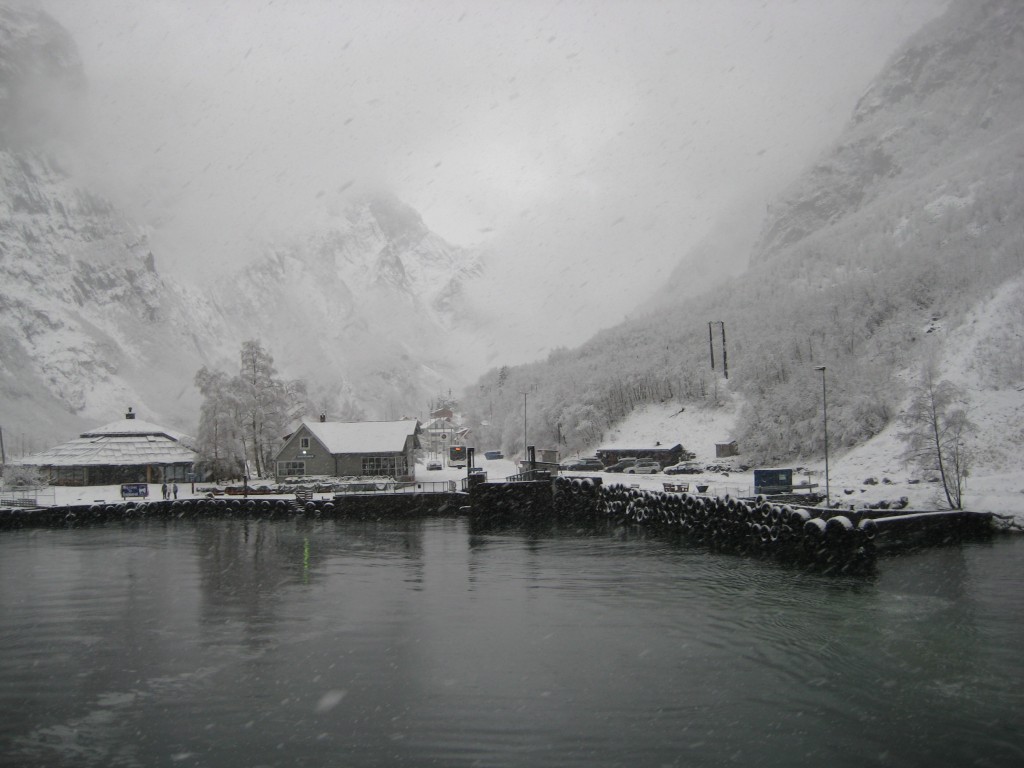







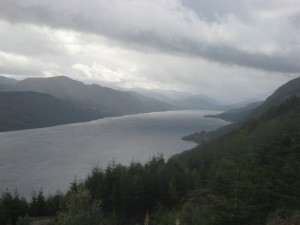

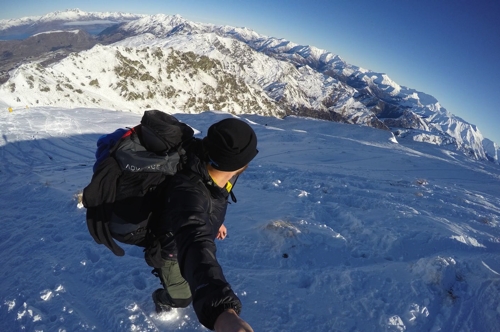
 Backpacking Matt
Backpacking Matt 



